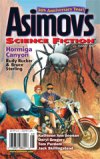 ISBN: 0330480227
ISBN: 0330480227
NLB Call No.: HAM – [SF]
Imagine if you had fame, money, youth, and knowledge and experience. And you’re a man. Who found the youth part back.
That’s the premise of the story.
Peter F. Hamilton — British Sci Fi author.
Speaking of Sci Fi authors, I much prefer Stephen Baxtor’s hard science fiction, or the weirdness of J. G. Ballard.
Hamilton’s novel read more like a YP novel to me. I found the character development rather superficial and predictable.
Story is set in the year 2040 or slightly over (published in 2002). P25, on how the protagonist’s wife (Sue Baker) felt that back in 2009 in Secondary school (not older than 16) she couldn’t cope without voice activated computers, when they relied on keyboard and mouse input. I thought it was the author imposing his own limitations on the character. Sue would have been one of those Born Digital.
Storywise, it’s a 5 on a scale of 10. I might read this on a plane if there’s nothing else to read. More to finish the story out of habit than real interest.
p 211 – why he really gave away the codes for the data crystal architecture.
p78 – argument against rejuvenation – that current money instruments are designed to last 20 years or so.
PLOT in brief:
Man, father of the datasphere (think “Bill Gates makes Microsoft Open Source”) gets revived from death. Gets rejuvenated physically, with no apparent loss in mental faculties. A 20 year old with the experience of someone in his 80s. Especially his libido.
Married to a woman out of convenience, but they gradually learn to fall in love. They have an angsty teenaged son. Spoilt brat, really.
 The 30th Anniversary Year issue of Asimov’s Science Fiction magazine.
The 30th Anniversary Year issue of Asimov’s Science Fiction magazine.
